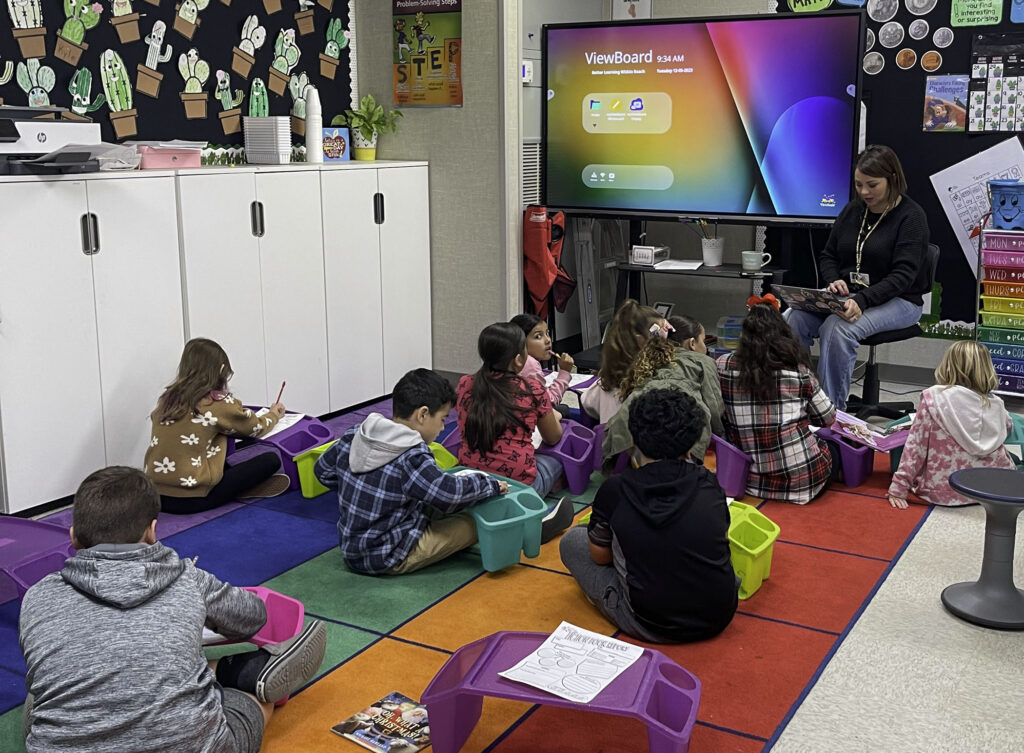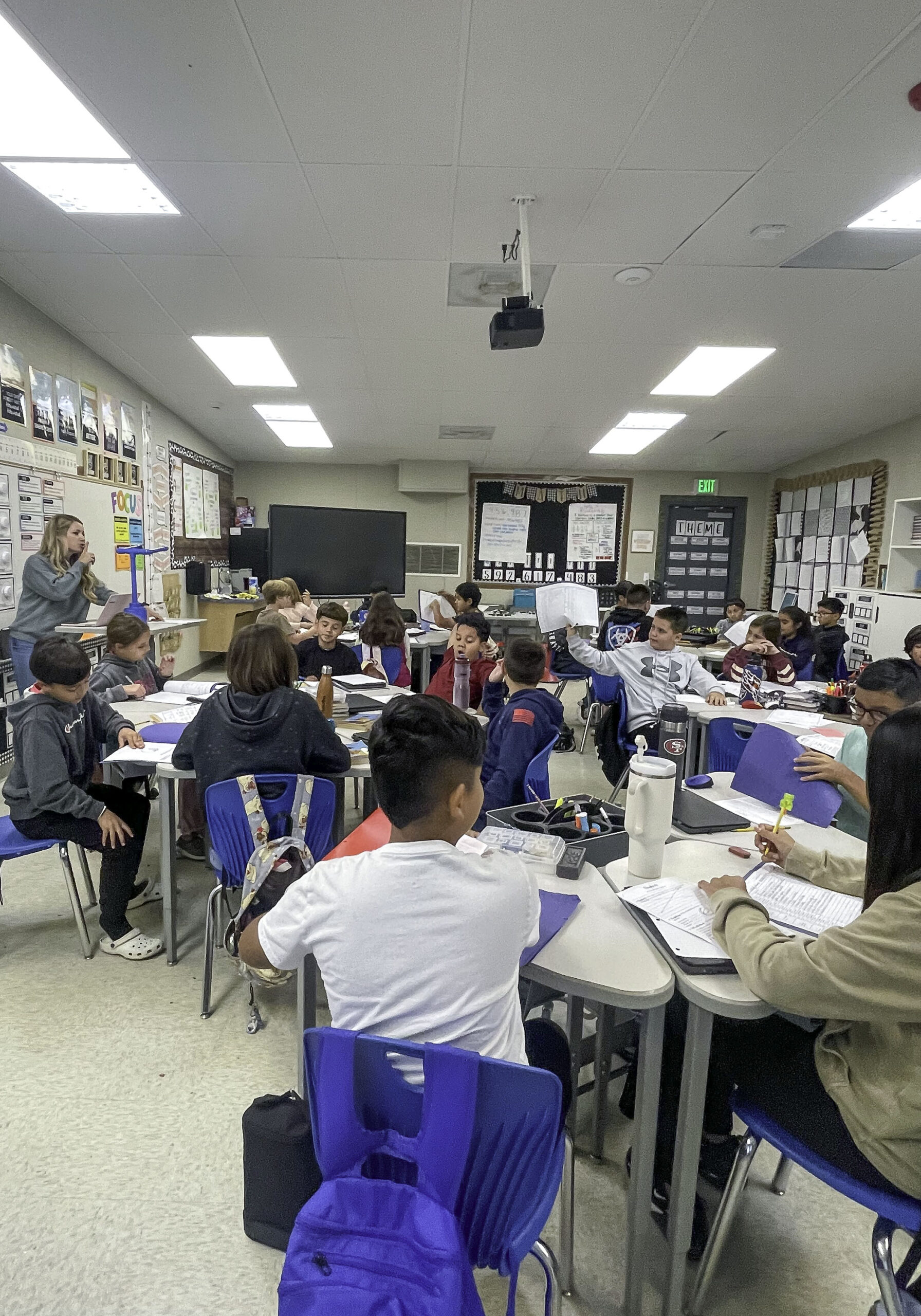Back In Class: Maple School District Fights Chronic Absenteeism
One of the biggest challenges facing schools and districts following the COVID-19 pandemic has been getting kids consistently back into the classroom. As schools opened following the lockdown, California’s Chronic Absenteeism Rate skyrocketed.
If a student misses at least 10 percent of school days, they are considered chronically absent. Absences can quickly add up. In a 180-day academic year, that amounts to 18 missed days, or just two days per month.
According to statewide data, before the pandemic, the California absentee rate was 12 percent, with Kern County at 11.5 percent. During the 2021-22 school year, 30.8 percent of students across the state were considered chronically absent. In Kern that number was 37.6 percent.

2nd Grade Book Reports with Mrs. Gallagher.
Kern’s rates have improved in the past year but still lag behind pre-pandemic levels. During the 2022-23 school year, the state rate fell to 25.4 percent, with Kern slightly higher.
According to Attendance Works, a nonprofit promoting attendance in schools, if the problem is not addressed, chronic absence will dramatically increase the number of students struggling with reading, writing, and math, as well as increase dropout rates.
One school district in Kern County is making great strides in getting students back to school. Maple Elementary School District in Shafter is home to just under 300 students. It has the lowest Chronic Absenteeism Rate in the county at just 7.4 percent.
Niki Espinoza, Maple’s Community and Family Coordinator, is spearheading this effort. She says the key is educating the parents on the importance of attendance.

Kindergarten Calendar Time with Mrs. Knox.
“If you tell a parent your child is chronically absent, they’re not going to know what you’re talking about,” she said. “We’re equipping them with information, so they know how important it is, and we let them know their children matter.”
Espinoza says she greets children at the gate every morning, and if they miss more than a few days of class, she reaches out to the family to see what she can do to help get them back on track.
“When a child is absent, they are missing valuable education time in the class that they will not get back. They will miss one-on-one time with the teacher. They will miss time for reading interventions. It’s so important for the child to be here.”
When parents know that you’re on their side, you’re on the same team, they’re going to send those kids to school. They’re going to be honest with you. They’re going to share with you, they’re going to trust you, and that’s about relationship building.
A lot of factors can go into a child becoming chronically absent. Espinoza says sometimes there are problems happening in the home, or there’s teasing or bullying at school which could make kids want to stay home more. Once a child starts to get behind in class, it can feel overwhelming to try and catch up.
Absences and tardiness can also affect the whole classroom when teachers have to slow down to help absent children catch up.
“The students who have been actively learning are now pausing, backtracking and doing rework,” Espinoza said.
Attendance became a concerted effort for the Maple School District, with staff carefully tracking and reporting absence data, educating parents, sending out notifications, and keeping students engaged. Espinoza is always eager to lend a hand to others. Earlier this fall, she helped create an Attendance Awareness Month informational campaign for others to utilize and has presented Maple’s approach to educators across the county.

Niki Espinoza with students before class.
Good attendance can have so many benefits, not just in education. Studies show regular attendance can improve kids’ social and emotional wellbeing, boost their confidence, forge connections with their peers, and prepare them for higher education and adult life.
“It’s socialization. It’s learning to speak to peers, and it’s learning to interact with adults…school is a place for engagement on all levels of growth for a child,” Espinoza said.
While ensuring students are in school all day, every day is essential foremost for their academic progress, there are financial implications as well. Schools receive state funding based on the Average Daily Attendance (ADA). If attendance levels go down, that means schools receive less money to fund important educational programs.
Attendance Works says schools need to address absenteeism with an inclusive, problem-solving approach and not use blame or punishment.
Espinoza agrees that shaming is not the answer, and instead it’s important for schools to remind parents that they’re all working toward the same goal.

Mrs. Dobbs does Christmas Crafts with Kindergarteners.
“When parents know that you’re on their side, you’re on the same team, they’re going to send those kids to school. They’re going to be honest with you. They’re going to share with you, they’re going to trust you, and that’s about relationship building.”
Espinoza says getting attendance rates up across the district was a massive team effort and the work’s not done yet.
“We have a staff here that truly loves our kids. And we’re here to serve and advocate for our kids,” she said. “One person can’t do this. It is a group effort.”
She says one of the best ways to keep kids engaged in the classroom is to make it fun for them.
“If school is fun, children will come. It’s as simple as that,” she said.

5th Grade Vocabulary Lesson with Mrs. Clendenen
By Katie Avery
Katie Avery joined the Kern County Superintendent of Schools in 2023 as a Communications Specialist. As a former journalist and marketing professional, her passions include media and storytelling. Before joining KCSOS, Avery worked for various local TV stations as well as the health care industry.
